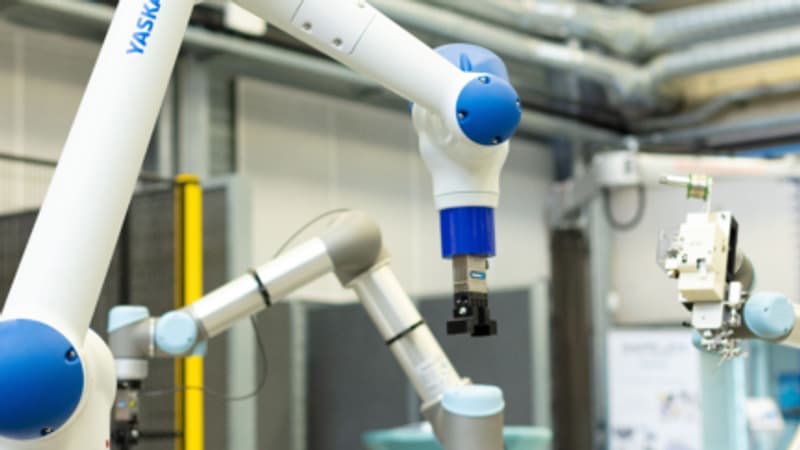What is the reality of robotics? A few weeks ago, Elon Musk presented two prototypes of the humanoid robot Optimusthat your company You’re there he hopes one day to produce by “millions” to “transform civilization” and build a “future of abundance” where poverty will disappear.
A beautiful perspective that at the moment is an absolute fantasy since the industry (and the robot of the future head of Twitter) is far from this reality. Like humanoid robots in general that make geeks’ eyes sparkle but are currently unable to stand humans.
The reality of robotics today is much more pragmatic and realistic. It can be seen in action in factories and industries. Produce with the help of workers and technicians.
France, 15th worldwide in density of industrial robots
Japan, South Korea and Germany are the countries where the density of industrial robots is highest. France has long been a laggard in this area, the fault of an industry in free fall for decades. But the revival of industry in France in recent years with the installation of many new factories is causing a strong demand for robots, machines that are increasingly more functional and scalable.
Proxinnov is a unique experience center in France (in La Roche sur Yon) that allows you to see in real size what is possible. It brings together a network of 170 associated companies and offers expertise missions, support to industrialists, feasibility studies, training… It is the largest robotics cluster in France.
Above all it has of a real factory of 1000 m2, a kind of production showroom that allows you to see in real size and test what is possible in all industrial fields related to robotics: assembly, finishing, 3D printing, welding, machining, logistics… within dedicated cells. “Simply put, we are accelerating the implementation of robotic solutions to drive business performance,” sums up Jade Lemaître.
Explaining reality versus Elon Musk’s dream
For what kind of projects? “This mainly concerns SMEs and ETIs for production issues, in particular small series, but we cover many sectors. Industrial carpentry, agri-food, nautical/naval, wood, electronics, metallurgy, aeronautics. Or in problematic productions: we make to measure. done, case by case,” he explains.
It is also and above all about dismantling myths. “Some are very expert in robotization and we can show them very quickly what is possible or not. And others are very neophytes. And there are myths about costs. We think it’s cheap but it’s not. always accepted. Many companies are poorly or poorly informed on the subject. And there it is difficult to explain reality versus Elon Musk’s dream, “explains Jade Lemaitre.
The numerous videos of robots from Boston Dynamics, for example, capable of dancing, walking, monitoring premises or even running, leave an impression.
The key in hand does not exist
A robot is usually a base, an arm, and a gripper (the hand at the end of the robot that performs the gesture, the desired movement). All programmed for a task.
“We have to customize for each application in 85% of the cases. The key in hand does not exist. It’s essentially a matter of setting up the clamp. But the ongoing reflection is the adaptability of robots by adding abilities (skills), which non-robots will be able to easily program. Until now, everything was programmed differently with different systems, a kind of software layer cake with proprietary technologies to make the different parts of a robot work together,” explains Jade Lemaitre.
Another strong trend, the “cobots”, robots that come to support humans. “This is the segment that is growing the most (+15%), because it is the reality of the market: many times a man with the robot is needed. It’s easy to program, simple, not too expensive. It finds its place at the end of the factory, for example as a ‘3rd arm’. On the other hand, it is not about putting a robot next to a human: it is the task of each one, it is much easier to orchestrate” continues the manager. “Collaborating on the same task does not work, except when we talk about exoskeletons.”
Since its creation, Proxinnov has already supported 150 industrial projects and has demonstrated the relevance of a public/private model with financing (1.5 million euros of annual budget) provided by the region, the BPI, the State and industrial partners.
Source: BFM TV


